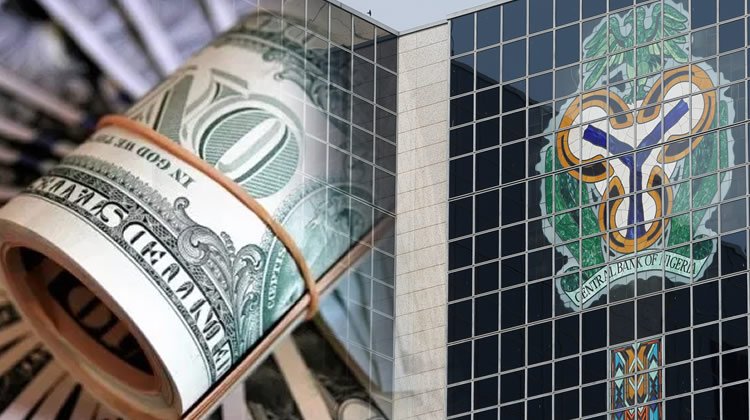Latest CBN News and Naira to Dollar Update Today 22 Sept 2023 can be accessed below.
Stay informed about the latest CBN news and Naira to Dollar updates as of September 22, 2023. Understand the ongoing Naira depreciation, its impact on businesses, and the need for informed decision-making. Discover expert insights into factors influencing the Naira’s value and the widening gap between official and parallel market rates. Explore the importance of pragmatic measures for economic growth and development in Nigeria.
Nigerians Brace for Continuous Naira Depreciation
In a sobering report from Stear’s Africa FX Monitor, Nigerians are urged to prepare for a prolonged decline in the value of the Naira. The report warns of ongoing pressure on Nigeria’s FX rates, shedding light on the challenging economic landscape.
Anticipated Naira Volatility
The Africa FX Monitor’s report, released on Thursday, anticipates that the volatility of the Naira will persist in the coming days. Black market rates are predicted to soar as high as N985 per US Dollar in the short term. Recent reports already highlight the dollar trading at N984 on P2P platforms, with the official NIFEX window closing at N770.7/$1.
A Decade of Decline
Over the past seven years, Nigeria’s currency has witnessed a significant decline, losing over 30% of its value. Despite recent efforts by the Federal Government to unify exchange rates and restore stability to the forex market, Stears’ Africa FX Monitor underscores ongoing challenges resulting from market fundamentals and distortions.
Informed Business Decisions
Fadekemi Abiru, Head of Insights at Stears, expresses concern about the Naira’s ongoing volatility. However, she emphasizes that understanding this volatility is vital for Nigerian businesses to make informed decisions.
She notes, “Stears’ Africa FX Monitor serves as a vital tool for understanding and responding to the Naira’s fluctuations. The continued unpredictability of the Naira underscores the importance of timely and informed decision-making for businesses and investors in Nigeria.”
The Complex Dynamics
Dumebi Oluwole, Senior Economist at Stears, sheds light on the intricate dynamics influencing the Naira’s performance. He highlights the interconnectedness of the Naira with global economic trends, geopolitical events, and local policy decisions. Oluwole emphasizes that knowledge is crucial in today’s volatile market, aiding strategic financial decisions.
Factors Impacting the Naira
The Stears’ Africa FX Monitor attributes the Naira’s performance to fiscal policies, external trade, and global market trends. Key influencers include inflation rates, interest rates, policy events, and geopolitical factors. This holistic perspective provides businesses and investors with valuable insights into the Naira’s value.
A Comprehensive Intelligence Tool
Stears’ Africa FX Monitor offers a comprehensive exchange rate data repository, delivering daily FX updates on Africa’s top economies, including Nigeria, Kenya, and South Africa. It also offers insights into daily FX drivers, providing a holistic view of the economic landscape.
Naira Weakens to 990/$1 on Parallel Market
As the Naira faces intense pressure, it experiences significant depreciation, plummeting to N990 to a dollar on the parallel market. This decline contrasts starkly with the N950/$1 rate just the day before.
I&E FX Window Shows Slight Improvement
Conversely, the official Investors and Exporters’ (I&E) FX Window sees a marginal appreciation, with the Naira trading at N771/$1 compared to N777/$1 the previous day.
Speculative Demand
Currency dealers in Lagos State report unprecedented demand for the US dollar, particularly on the day of the Naira’s significant depreciation. This surge in demand is attributed to speculative factors.
Decline in Dollar Supply
While the parallel market witnesses a surge in dollar demand, the supply of the greenback continues to dwindle. The total turnover in the I&E window decreases, further affecting the supply of the US dollar.
Revenue Mobilisation and Naira’s Performance
Meanwhile, the Chairman of the Revenue Mobilisation Allocation and Fiscal Commission (RMAFC), Mohammed Bello Shehu, reveals that approximately N5.24 trillion accrued into the federation account between January and June 2023.
Naira’s Record Low
Despite these revelations, the Naira’s value plunges to a record low, nearing 1000 Naira per US dollar on the parallel market. The widening gap between the official and parallel market rates raises concerns about the Naira’s stability.
The Need for Pragmatic Measures
As Nigeria grapples with economic challenges, pragmatic measures are essential to enhance distributable revenues among the three tiers of government for overall growth and development. The RMAFC emphasizes the importance of addressing statutory deductions and revenue generation in sectors like solid minerals.
Conclusion
The Nigerian Naira faces continued volatility, prompting businesses and investors to navigate a complex economic landscape. While the government strives to restore stability, ongoing challenges underscore the importance of informed decision-making in these uncertain times.
FAQs
1. What is causing the ongoing decline in the value of the Naira? The Naira’s decline is influenced by a combination of factors, including fiscal policies, external trade, global market trends, inflation rates, interest rates, policy events, and geopolitical factors.
2. How can Nigerian businesses respond to the Naira’s volatility? Understanding the Naira’s fluctuations is crucial for informed decision-making. Businesses should stay informed and consider adopting prudent financial strategies.
3. Why is there a gap between the official and parallel market rates for the Naira? The gap between the official and parallel market rates reflects market dynamics, including speculative demand and supply imbalances.
4. What measures are being taken to address the Naira’s challenges? The government is making efforts to unify exchange rates and stabilize the forex market. However, ongoing challenges persist, necessitating informed decision-making by businesses and investors.
5. How can Nigeria enhance distributable revenues among the three tiers of government? Pragmatic measures, such as addressing statutory deductions, diversifying revenue sources (e.g., solid minerals), and ensuring transparent management of commonwealth, are essential to achieve economic growth and development.


















